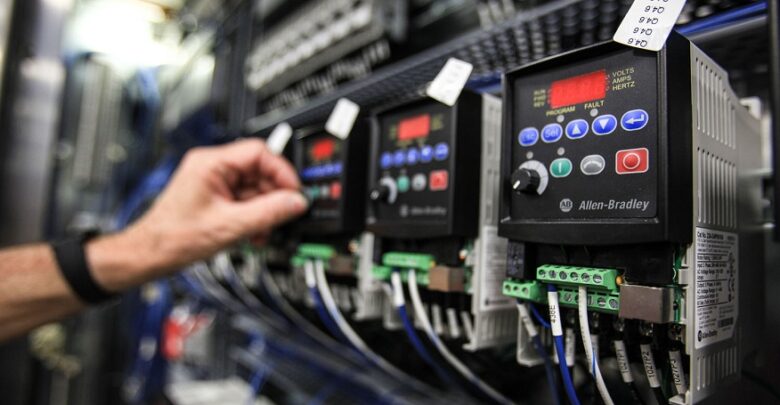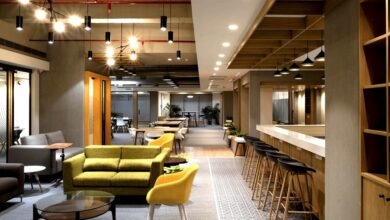All you need to know about water control systems in affordable housing

India, a country facing the dual challenges of water scarcity and burgeoning population, is witnessing transformative advancements in water control systems and visitor management, largely propelled by the integration of IoT (Internet of Things) technology. This convergence of innovation holds immense promise in addressing critical issues related to efficient water management and enhanced visitor experiences across diverse sectors.
Water Control Systems
In a nation where water is a precious resource, the implementation of water control systems becomes paramount. IoT-based water control system employs an array of sensors, actuators, and data analytics to efficiently manage water distribution, detect leakages, and optimize consumption. Through real-time data analysis, these systems enable proactive measures to curb wastage and promote conservation. Illustratively, initiatives like smart water meters in various Indian cities have showcased remarkable success in curbing water loss and improving distribution efficiency.
Water Monitoring Systems Using IoT
The integration of water monitoring systems using IoT has revolutionized how data related to water quality, quantity, and usage is collected and analyzed. Sensors embedded in various water infrastructures continually monitor parameters such as pH levels, turbidity, and flow rates. Leveraging IoT’s capabilities, these systems provide real-time insights, enabling swift responses to water quality issues and facilitating informed decision-making. Several projects across India have harnessed this technology to ensure access to clean water while efficiently managing resources.
Visitor Management Systems in India
Visitor management systems in India, crucial across diverse sectors such as hospitality, corporate offices, and tourist destinations, are also transforming through IoT integration. These systems, employing sensors, cameras, and robust software solutions, streamline visitor entry, enhance security, and improve overall visitor experiences. From automated check-ins to personalized services, these advancements redefine the interactions between guests and service providers. Notable implementations in various Indian establishments have significantly elevated security measures and elevated visitor experiences.
Integration of IoT in Water and Visitor Management Systems
The convergence of IoT in both water and visitor management systems presents a new realm of possibilities. Integrating these systems allows for synchronized data sharing and streamlined operations. For instance, within hospitality, linking visitor data with water consumption patterns can aid in predictive resource allocation, optimizing both guest experience and resource utilization. However, challenges related to data security and interoperability need addressing for seamless integration.
India, a nation grappling with water scarcity and a burgeoning population, is witnessing a paradigm shift in its approach to resource management and visitor control systems. The integration of IoT (Internet of Things) technology has revolutionized both water management and visitor control systems, offering innovative solutions to critical challenges.
In the realm of water management, IoT-based systems have emerged as a beacon of hope. These systems leverage a sophisticated network of sensors, actuators, and data analytics to revolutionize water distribution and consumption. By continuously monitoring water usage and detecting leakages in real time, these systems ensure efficient water utilization while curbing wastage. Smart water monitoring systems using IoT metering initiatives in several Indian cities have showcased substantial success in reducing water loss and enhancing distribution efficiency, serving as a testament to the potential of IoT-driven water control systems.
Simultaneously, IoT-enabled water monitoring systems have played a pivotal role in ensuring water quality and quantity. Equipped with sensors that measure various parameters like pH levels, turbidity, and flow rates, these systems provide instantaneous insights into water conditions. By analyzing this data in real-time, authorities can swiftly address water quality issues and make informed decisions. Across India, such implementations have been instrumental in safeguarding access to clean water and optimizing resource management.
Visitor management systems in India, another domain witnessing transformation, are being redefined through IoT integration. These systems, powered by sensors, cameras, and sophisticated software, streamline visitor experiences across multiple sectors. From hospitality to corporate settings and tourist destinations, IoT-driven visitor control systems automate entry procedures, fortify security measures, and personalize guest experiences. Numerous establishments in India have embraced this technology, leading to heightened security measures and elevated visitor experiences.
The convergence of IoT in water management and visitor control systems holds the promise of a more interconnected and efficient future. The integration of these systems could potentially revolutionize resource allocation and enhance operational efficiency. For instance, within the hospitality sector, linking visitor data with water consumption patterns can optimize resource utilization and elevate guest experiences. However, challenges such as data security and interoperability need to be addressed for seamless integration.
Looking ahead, the prospects for IoT-based systems in water management and visitor control appear promising. As technology evolves, newer advancements like AI-driven predictive analytics and blockchain for secure data sharing hold the potential to further refine these systems. Ultimately, the integration of IoT in water control and visitor management systems represents India’s journey towards a more sustainable, efficient, and interconnected future.
Water control systems play a pivotal role in managing and distributing water resources efficiently, catering to various needs ranging from agricultural irrigation to urban water supply. These systems encompass a wide array of technologies and infrastructures designed to regulate, manipulate, and optimize the flow, storage, and utilization of water.
At its core, a water control system comprises a network of dams, reservoirs, canals, pipelines, pumps, and sensors. Dams and reservoirs act as storage facilities, retaining water during periods of surplus and releasing it during times of scarcity. Canals and pipelines serve as conduits for transporting water over long distances, ensuring its delivery to regions where it’s required most. Pumps are employed to lift water to higher elevations, facilitating its movement through various channels.
Modern water control systems often integrate sophisticated technologies such as sensors, automated valves, and monitoring devices. These components enable real-time data collection, analysis, and decision-making, enhancing the efficiency and accuracy of water distribution. Automated valves and control mechanisms regulate the flow of water based on demand and predefined parameters, optimizing usage and minimizing wastage.
In agricultural settings, water control systems significantly impact crop yield and sustainability. Precision irrigation systems, part of these control systems, deliver water directly to plants in precise amounts, minimizing water usage while maximizing crop growth. This ensures that agriculture remains sustainable even in water-scarce regions.
Moreover, in urban areas, water control systems ensure a consistent and reliable water supply for households, industries, and businesses. Proper management and distribution of water resources contribute to economic development, public health, and environmental sustainability.
As water scarcity becomes an increasingly pressing global issue, the importance of efficient water control systems cannot be overstated. Implementing and continually improving these systems are crucial steps towards sustainable water management, ensuring equitable access to this vital resource for generations to come.
Conclusion
The future of IoT-based systems in water management and visitor control systems in India looks promising. As technology continues to evolve, the scope for innovation in these sectors widens. Emerging trends such as AI-driven predictive analytics and blockchain for secure data sharing hold potential for further refining these systems. In conclusion, the integration of IoT in water control and visitor management systems represents a paradigm shift in India’s approach towards resource management and visitor experiences, heralding a more sustainable and efficient future.



